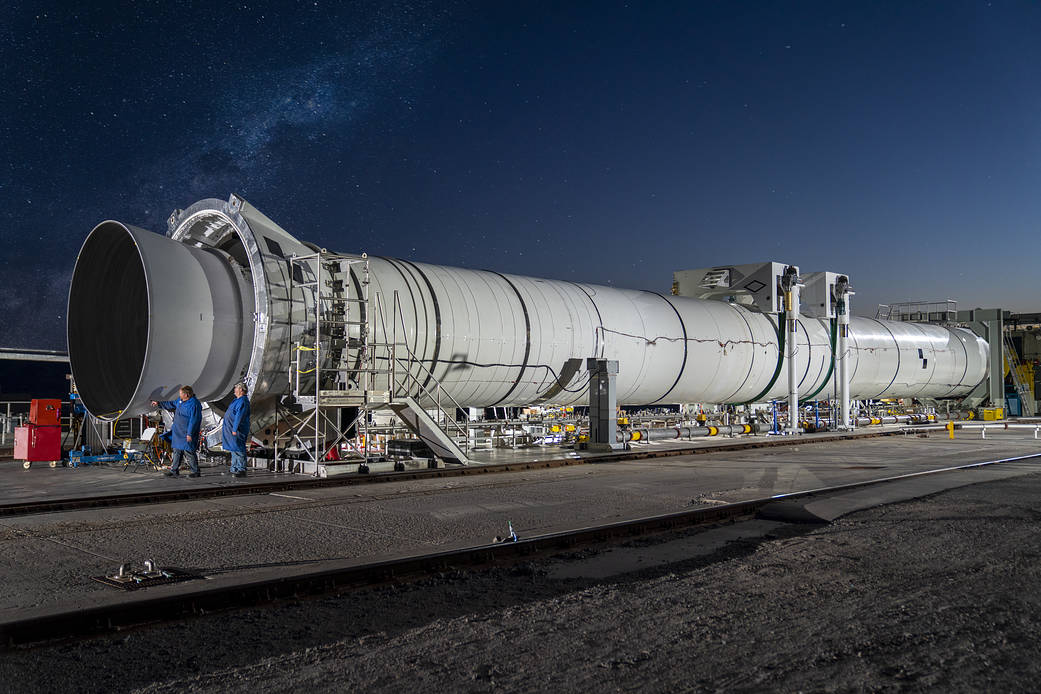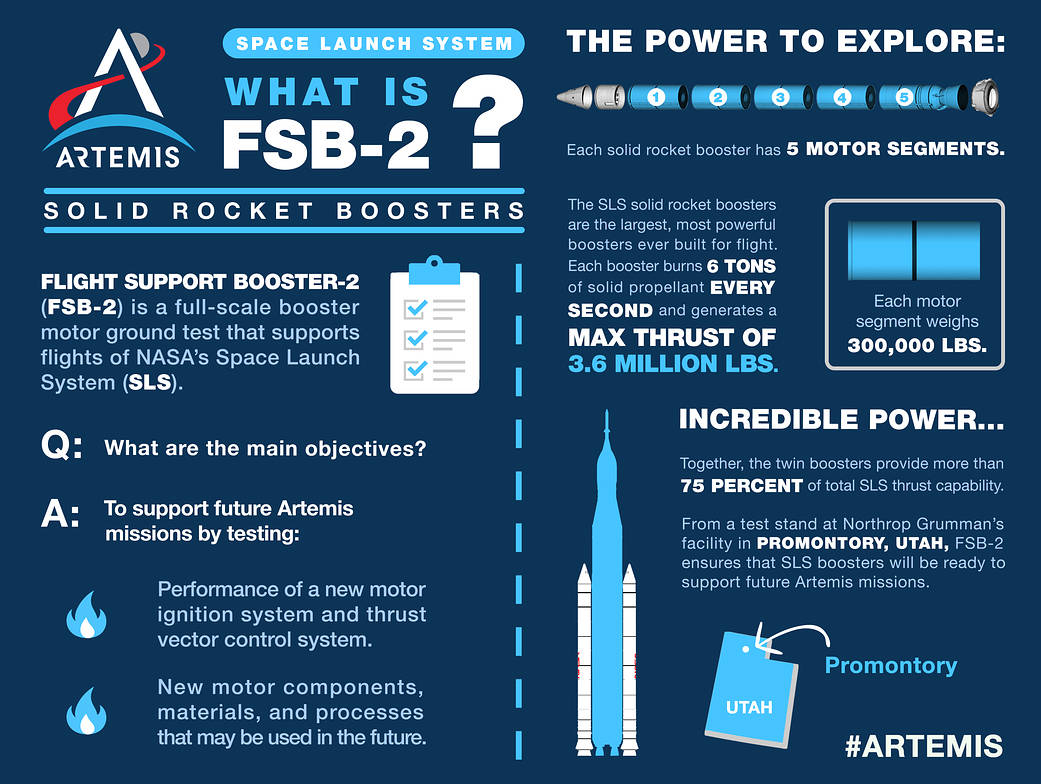NASA and Northrop Grumman will perform a full-scale static test of a Space Launch System (SLS) solid rocket booster motor at Northrop Grumman’s Promontory, Utah, test facility July 21. Engineers will fire the booster during the demonstration, called the Flight Support Booster 2 test, to evaluate materials and processes to improve boosters for future Artemis missions.

“The current SLS boosters for the first eight Artemis missions are using a robust mix of new avionics and substantial heritage hardware from the Space Shuttle Program,” said Bruce Tiller, SLS Booster Program manager. “This particular ground test will demonstrate some new materials, a completely new steering system, and a new way to ignite the motor. Data from this test will improve our booster design for future missions that take us farther into deep space than ever before.”
For the test, one booster is affixed in a horizontal test stand and fired for approximately two minutes, the same amount of time and at the same power level as it would be fired during launch. On launch day, a pair of solid rocket boosters in a vertical position attached to the core stage of the SLS rocket supply more than 75% of the total thrust for the first two minutes of flight. Northrop Grumman is the lead contractor for the SLS solid rocket boosters.
NASA and Northrop Grumman experts will discuss the Flight Support Booster 2 test during a Facebook Live on the Space Launch System rocket’s Facebook page, as well as on NASA’s Marshall Space Flight Center YouTube channel, beginning at 2:55 p.m. EDT. During the test, anyone can submit questions on Twitter, Facebook, and YouTube using the hashtag #AskNASA. Julia Khodabandeh, motor team lead for SLS boosters at NASA’s Marshall Space Flight Center in Huntsville, Alabama, and Jessica Rose, chemical engineer for SLS boosters at Northrop Grumman, will answer questions.

The FSB-2 test builds off the Flight Support Booster-1 test conducted in September 2020 and will demonstrate a newly qualified motor initiation system and qualify a new ablative lining to protect the booster nozzle. This test will also provide information for the development of the next generation booster obsolescence and life extension booster that will support Artemis IX and beyond.
Through Artemis missions, NASA will land the first woman and the first person of color on the Moon, paving the way for a long-term, sustainable lunar presence and serving as a steppingstone for future astronaut missions to Mars.
Corinne Beckinger
NASA’s Marshall Space Flight Center
256-544-0034
corinne.m.edmiston@nasa.gov


























